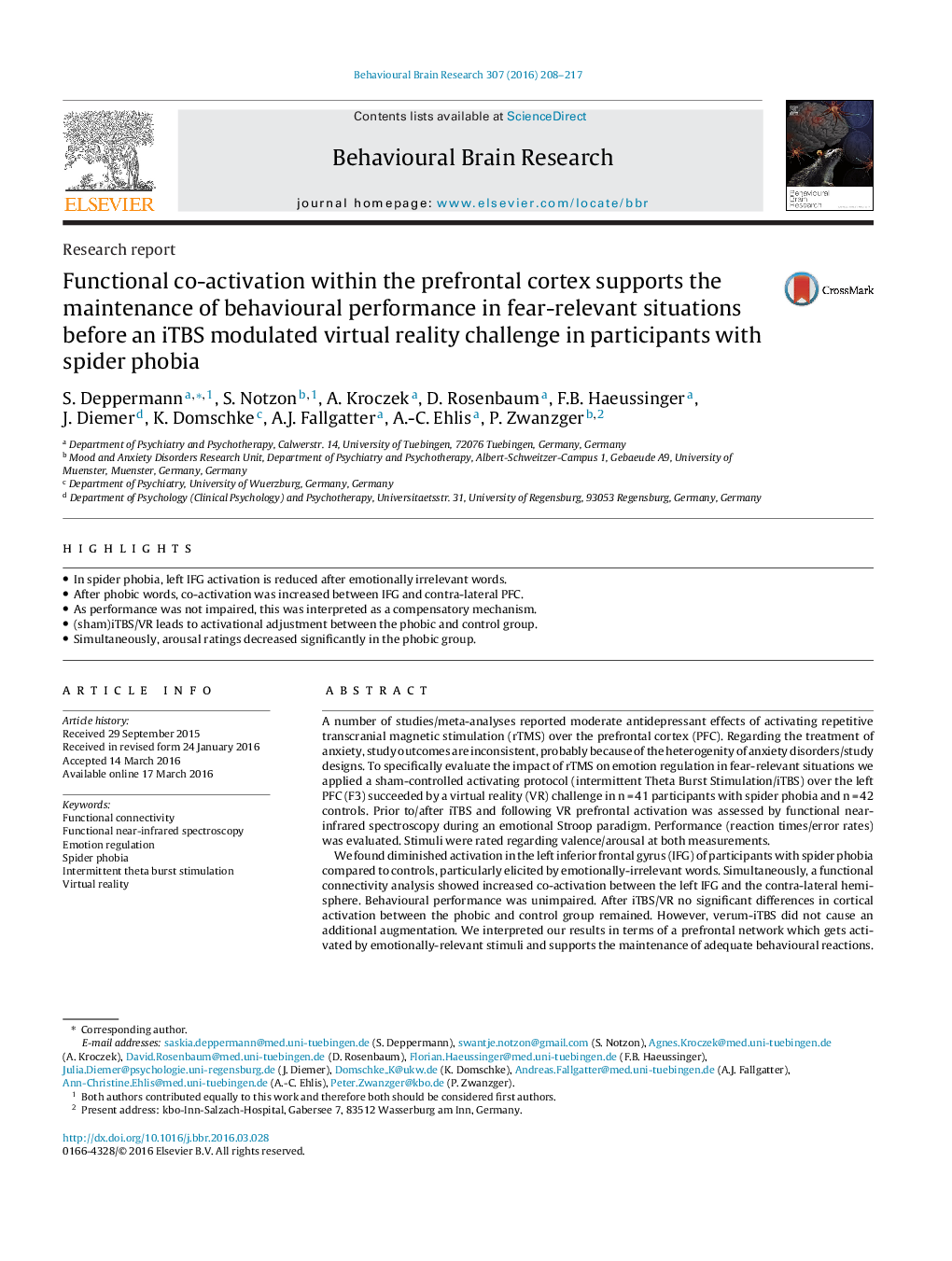| کد مقاله | کد نشریه | سال انتشار | مقاله انگلیسی | نسخه تمام متن |
|---|---|---|---|---|
| 4312269 | 1612926 | 2016 | 10 صفحه PDF | دانلود رایگان |

• In spider phobia, left IFG activation is reduced after emotionally irrelevant words.
• After phobic words, co-activation was increased between IFG and contra-lateral PFC.
• As performance was not impaired, this was interpreted as a compensatory mechanism.
• (sham)iTBS/VR leads to activational adjustment between the phobic and control group.
• Simultaneously, arousal ratings decreased significantly in the phobic group.
A number of studies/meta-analyses reported moderate antidepressant effects of activating repetitive transcranial magnetic stimulation (rTMS) over the prefrontal cortex (PFC). Regarding the treatment of anxiety, study outcomes are inconsistent, probably because of the heterogenity of anxiety disorders/study designs. To specifically evaluate the impact of rTMS on emotion regulation in fear-relevant situations we applied a sham-controlled activating protocol (intermittent Theta Burst Stimulation/iTBS) over the left PFC (F3) succeeded by a virtual reality (VR) challenge in n = 41 participants with spider phobia and n = 42 controls. Prior to/after iTBS and following VR prefrontal activation was assessed by functional near-infrared spectroscopy during an emotional Stroop paradigm. Performance (reaction times/error rates) was evaluated. Stimuli were rated regarding valence/arousal at both measurements.We found diminished activation in the left inferior frontal gyrus (IFG) of participants with spider phobia compared to controls, particularly elicited by emotionally-irrelevant words. Simultaneously, a functional connectivity analysis showed increased co-activation between the left IFG and the contra-lateral hemisphere. Behavioural performance was unimpaired. After iTBS/VR no significant differences in cortical activation between the phobic and control group remained. However, verum-iTBS did not cause an additional augmentation. We interpreted our results in terms of a prefrontal network which gets activated by emotionally-relevant stimuli and supports the maintenance of adequate behavioural reactions. The missing add-on effects of iTBS might be due to a ceiling effect of VR, thereby supporting its potential during exposure therapy. Concurrently, it implies that the efficient application of iTBS in the context of emotion regulation still needs to be studied further.
Journal: Behavioural Brain Research - Volume 307, 1 July 2016, Pages 208–217